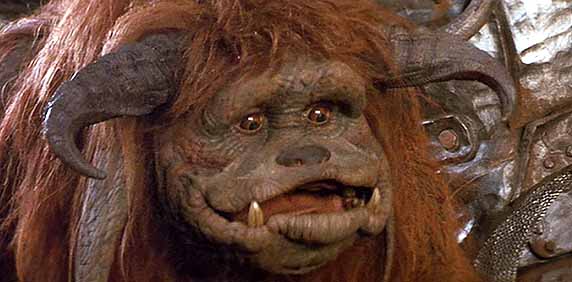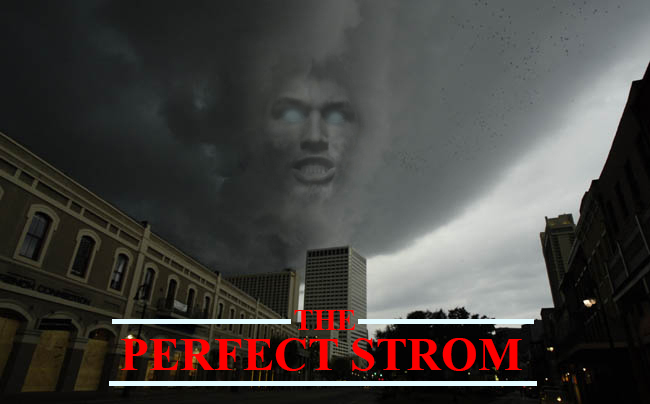He is a writer. He is a guy who plays games. He is The Perfect Strom. There’s a problem with ludonarrative dissonance — the gap between a game’s narrative and the way it plays. Not with the theory, mind you, but with the people who employ it. Like a mighty tempest, Steven will descend upon one of the video game industry’s most recent tragedies and rain down his thoughts.
Warning: Minor spoilers for Tomb Raider and major spoilers for Uncharted: Golden Abyss ahead.
A change in setting and background is all it takes to turn a fighter into a mercenary.
A lot has been said about ludonarrative dissonance — the feeling you get when a videogame’s narrative doesn’t match up with its gameplay. The favorite example of this occurrence is usually Uncharted and its smarmy, violent protagonist Nathan Drake. Our boy Drake rolls out of every 12-on-one firefight with a quip and an empty gun. According to some, this means we should be experiencing ludonarrative dissonance. Drake shouldn’t be nearly as amicable as he is during cutscenes after the chain of neck-breaking and face-shooting we, the players, have just put him through.
That same pall of awkwardness is said to hang over Lara Croft’s latest outing in the recent Tomb Raider reboot. Part in thanks to Uncharted‘s similarities to the franchise, and partially because of the often misguided marketing campaign which promised a “realistic” tale of survival.

In this supposedly realistic tale of survival, many writers have taken issue with Lara’s seemingly abrupt transition from remorseful self-defender to mass murderer.
Coincidentally, this ties into another theory applicable to a separate debate to which the character of Lara Croft is no stranger. The concept of the Other — mentally segregating those which are different from ourselves as not entirely human — has been the focus of gender debates for years. Many would even agree it is the point from which all sexism spreads. Of course, the concept of the Other can be applied to just about any form of bigotry, and this is only one example.
Now, consider for a moment how this psychology can be applied Lara and Nathan.
Both are thrust into situations in which they are members of minorities among majorities. The majorities are unlike them for a number of reasons, not the least of which being their repeated attempts to kill our heroes. Is it unreasonable to believe that our own natural fight-or-flight instincts would rather quickly catalog these assailants as “other” than human in order to survive?
[box_dark]Nathan Drake[/box_dark]
In the case of Drake, this was likely a habit formed over time. Drake is not a hero. He’s not Dr. Henry Jones, fighting to preserve the lives and cultures of the past for future generations. He is a mercenary who steals priceless artifacts for thrills and profit.
Among Thieves and Golden Abyss do the best job of highlighting these aspects of his personality by juxtaposing him against less savory, yet equally mercenary figures like Harry and Dante. Drake knows these people because he knows himself, which is evidenced by his trademark sense of confidence and willingness to kill. Where he draws the line, showing that he has secreted away some sense of empathy for the outside world and silences critics’ claims that he’s a psychopath, is at allowing the Same (the opposite of the Other, those we categorize as “like us”) and the innocent (read: those not involved with his current business, and therefore not a threat to him and his).
At the end of Golden Abyss, we see the other end of this extreme. Drake’s cohort Dante is unconcerned with spreading irradiated gold among the world to turn a profit because he has categorized those faceless masses as beyond his concern. Drake is less willing to let this happen, and turns against his profiteering nature in order to save the day.
[box_dark]Lara Croft[/box_dark]
The primary difference between Drake and Lara’s situations is one of setting.
At the start of the newest Tomb Raider, Lara is, as the marketing promised us, only beginning her journey. She is not a mercenary or an adventurer. She is a modern role model, a woman following the new, middle-class dream of finding not a career that makes her rich or famous, but happy. This alone makes her a hero more applicable to reality than just about any video game protagonist, but what happens next is also exceptional.
She is pulled into a terrible situation against her will and forced to combat others who have been forced into a similarly unpleasant situation. If Tomb Raider were the Stanford Prison Experiment (another famous example of the power of the Other), the game’s antagonist would be the guards, her assailants would be those prisoners coerced into hurting their compatriots under the pretense of implied authority, and Lara would be a prisoner refusing to allow them to hurt or humiliate her — the difference being that none of them can leave their situation whenever they so choose.
The rather slight protagonist doesn’t start with the experience or build necessary to go hand-to-hand with her would-be killers at the outset. In fact, she can barely fight at all, with her only melee action debuting as a rather impotent shove.
Rather than playing things off with a flashback to childhood judo lessons or a shadowboxing montage, she flexes her ingenuity and circumvents the problem altogether. At range, she’s much more effective than a band of malnourished sailors with makeshift firebombs. The RPG-elements even do a reasonable job of “gamifying” Lara’s transition into a more physical threat. The procurement of experience points is perhaps an outdated method of translating progress (perhaps its time we do away with XP as a concept, or at least hide it better), but nevertheless it serves here as a metric for her increasing confidence and boldness.
The major problem with our interpretations of either protagonist isn’t that their actions don’t match the narrative, but that our experiences don’t match those of the characters. Of course we would find it strange that a character could remorselessly kill their adversaries. The average, physical adversary for a modern American is someone that cuts in line at Starbucks, not someone trying to bury a climbing axe in your face.
Even then, we already immediately categorize those people as the Other by referring to them as “douchebags” or something similar, rather than consider them as human beings with human motives for their actions.
We are one layer of sharp, metal abstraction hurtling towards our vital organs from being just like Lara, or bleeding on the ground.
The problem with ludonarrative dissonance is — as is so often the case with problems — a human issue. The next time you feel a disconnect between your character and your actions, take a moment to think. Ask yourself what you would do.






No Comments